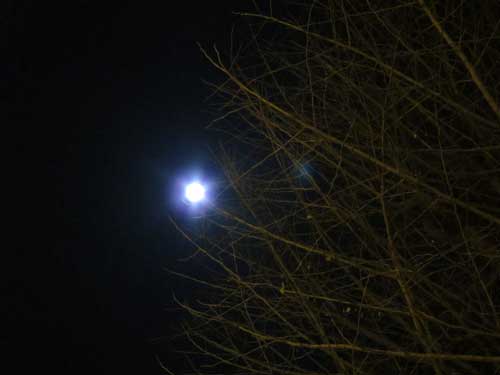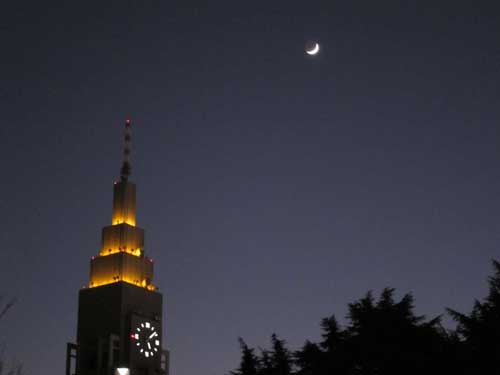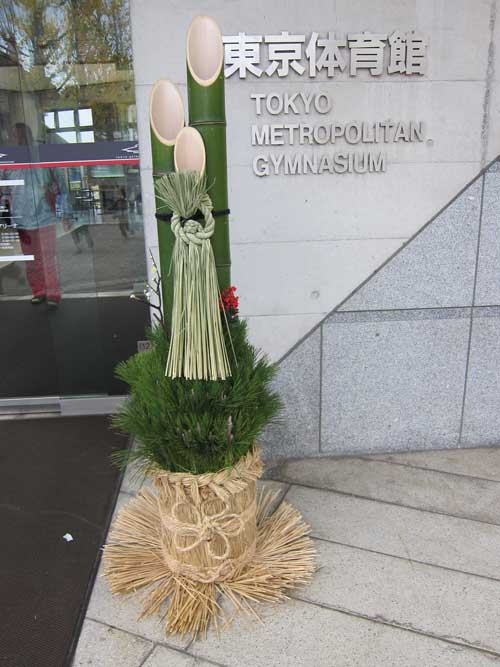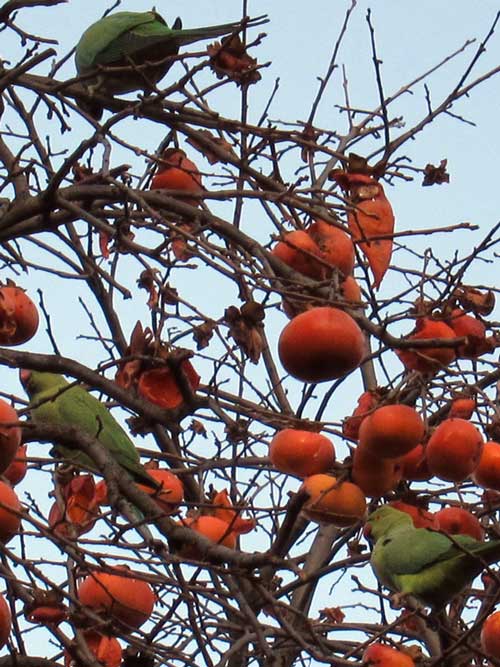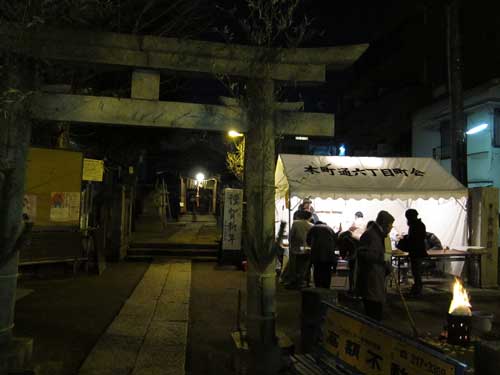
あけましておめでとうございます! 2010 began on a cold night in Tokyo one hour ago. We visited our local shrine: no line, hot rice drink, and a tiny bonfire. The small shrine’s doors were open, revealing that our local gods live amidst folding chairs and assorted bric-a-brac.
The visit to the shrine followed many hours of Kouhaku, the annual music extravaganza on NHK, plus a Johnny’s shmorgasbord of dozens of boy bands, dizzying video displays, and stages gliding over crazed fangirls. A very traditional new year in Japan.
Below is the “blue” moon, the second full moon of the month. Best wishes for the new decade!
